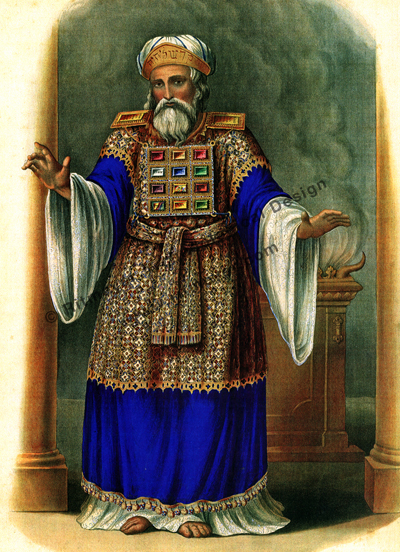Have Archaeologists Discovered High Priest’s Bell?
Posted: Wed Jul 27, 2011 6:00 pm
I found this discovery to be fascinating.. A possible high priests bell.. I was just there in this area about a month ago. Missed it. 
//www.ritmeyer.com/2011/07/21/have-archae ... ests-bell/

The directors of the excavation on behalf of the Antiquities Authority, archaeologists Eli Shukron and Professor Ronny Reich of Haifa University, said after the finding, “The bell looked as if it was sewn on the garment worn by a man of high authority in Jerusalem at the end of the Second Temple period.
“The bell was exposed in the city’s main drainage channel of that period, between the layers of dirt that had been piled on the floor of the channel,” they continued. “This drainage channel was built and hewn west to the Western Wall of the Temple Mount and drained the rainfall in the different parts of the city, through the City of David and the Shiloah Pool to the Kidron valley.”
The excavation area, above the drain, is located in the main street of Jerusalem which rose from the Shiloah Pool in the City of David. In this street an interchange was built through which people entered the Temple Mount. The remains of this interchange are what is known today as Robinson’s Arch. Archaeologists believe that the eminent man walked the streets of Jerusalem in the area of Robinson’s Arch and lost the golden bell which fell off his outfit into the drain beneath the street.
Jewish sources say that the high priests who served in the Holy Temple in Jerusalem used to hang golden bells on the edges of their coats. The book of Exodus (Shemot), for example, contains a description of the coat of Aaron the high priest in which it is said that coat contains, “bells of gold.”
While it is unknown if the bell belonged to one of the high priests, archaeologists have not ruled out the possibility.

//www.ritmeyer.com/2011/07/21/have-archae ... ests-bell/

The directors of the excavation on behalf of the Antiquities Authority, archaeologists Eli Shukron and Professor Ronny Reich of Haifa University, said after the finding, “The bell looked as if it was sewn on the garment worn by a man of high authority in Jerusalem at the end of the Second Temple period.
“The bell was exposed in the city’s main drainage channel of that period, between the layers of dirt that had been piled on the floor of the channel,” they continued. “This drainage channel was built and hewn west to the Western Wall of the Temple Mount and drained the rainfall in the different parts of the city, through the City of David and the Shiloah Pool to the Kidron valley.”
The excavation area, above the drain, is located in the main street of Jerusalem which rose from the Shiloah Pool in the City of David. In this street an interchange was built through which people entered the Temple Mount. The remains of this interchange are what is known today as Robinson’s Arch. Archaeologists believe that the eminent man walked the streets of Jerusalem in the area of Robinson’s Arch and lost the golden bell which fell off his outfit into the drain beneath the street.
Jewish sources say that the high priests who served in the Holy Temple in Jerusalem used to hang golden bells on the edges of their coats. The book of Exodus (Shemot), for example, contains a description of the coat of Aaron the high priest in which it is said that coat contains, “bells of gold.”
While it is unknown if the bell belonged to one of the high priests, archaeologists have not ruled out the possibility.
